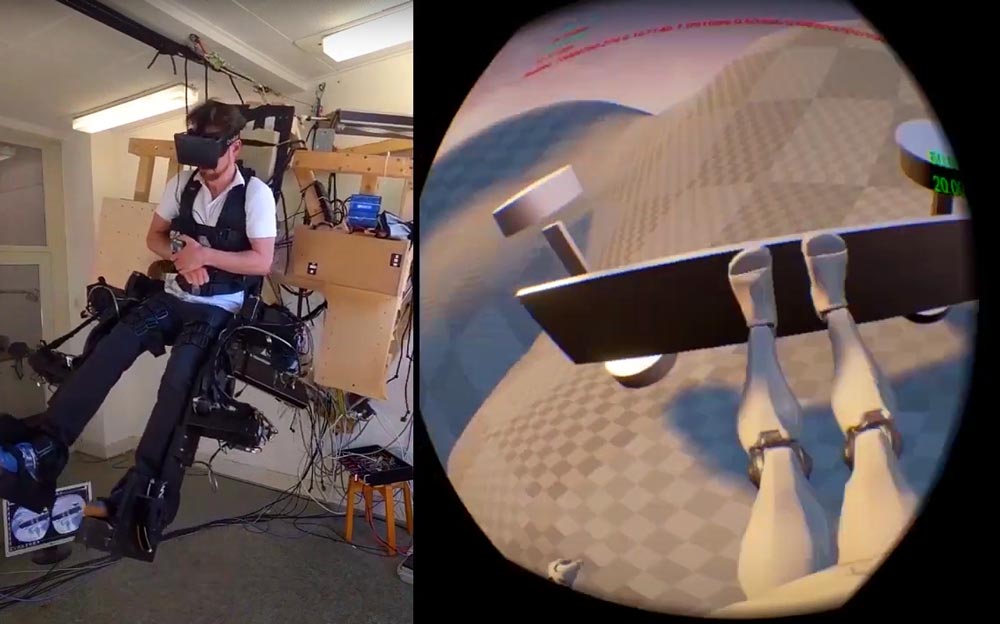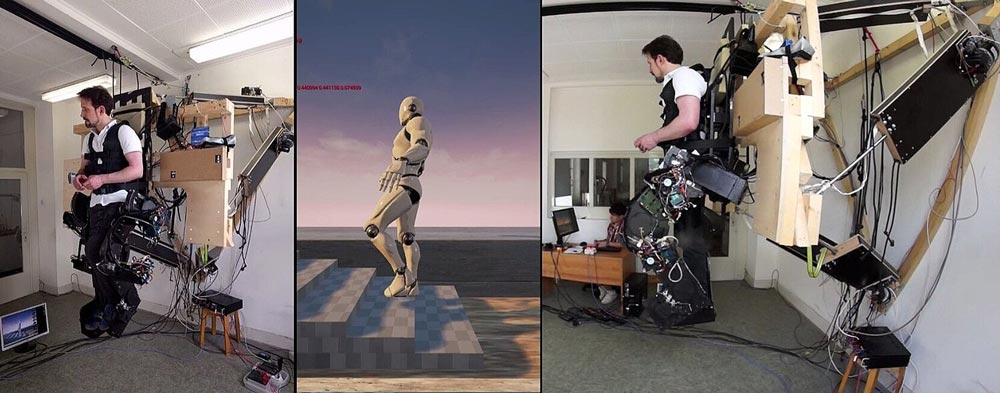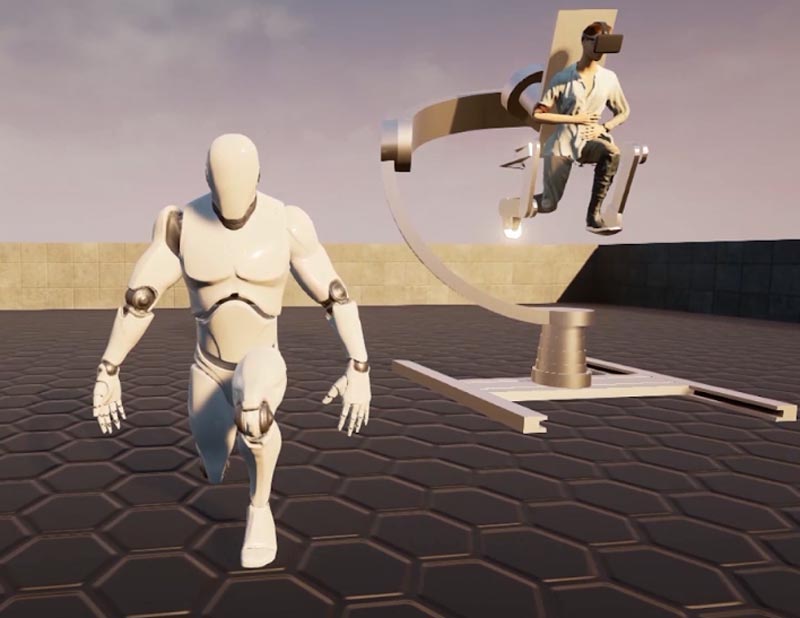
Currently, the Holotron is still a rough wooden block on the wall with lots of cables, buckles, rods, and levers. Once developed, the device is designed to solve the main problems of movement in VR.
Locomotion in VR is an unsolved problem: it works best when all real movements are transferred “one – on-one” to the virtual world. Then the immersion is maximum.
But this option of natural movement is often very limited, as the “blind” wearers of VR glasses run too fast to the walls or hit the furniture. The real world limits the virtually limitless virtual environment. This leads to unmanageable situations, especially when you don’t have much space.
Artificial movement solves this dilemma, but it is not 100% brought to mind and can cause VR-disease, and teleportation in any case lacks credibility. Running VR tracks and similar devices somewhat solve the problem, but still need to be refined and studied.
About a wooden exoskeleton in the world of virtual reality
German biophysicist and inventor Marcel Reese and his team have proposed a mechanical solution to the problem of motion in virtual reality: The Holotron exoskeleton is set to be the first device to allow realistic running in VR with feedback.

One day, humanoid avatars or robots can be remotely controlled by the system, as if they were your own body.
“VR is becoming like reality, and you can get to remote places right away without traveling,” Reese writes.
Spectacular structure
The design of the current prototype is as massive as it is impressive: in the demo video, Reese is suspended in a suit from a wooden panel that lifts him into the air.
The motors on the hips and knees create the driving forces that correspond to what is happening in VR. The team developed demo videos in which Reese climbs stairs in an exoskeleton, balances on a skateboard, or gets hit by a heavy ball. You can see them in the following video.
In future prototypes, more motors on the legs and additional motors on the arms, hands and back should provide a more realistic simulation of movement. The cost of the current state of development is about 55,000 euros.
The large wooden board on which the entire device currently hangs may in the future be replaced by a narrow fixture attached to a multi-axis gimbal rack that also rotates and tilts the user. Further updates to the Holotron should then, for example, simulate smell or heat for even more immersion.

This is what the future version of the holotron will look like: much thinner, mounted on a movable suspension rack. | Image: Holotron







